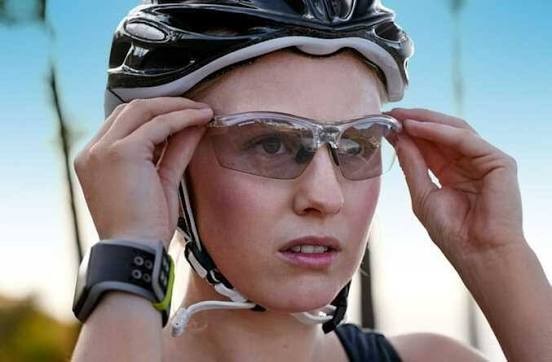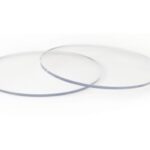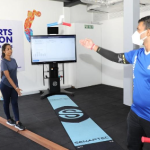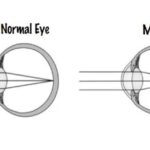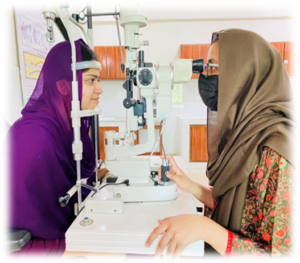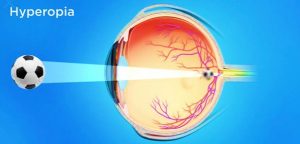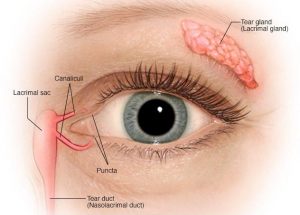Imagine a basketball player going up for a rebound, only to be hit by a stray elbow. Or a cyclist catching a pebble kicked up by the tire in front of them. In a split second, a lifetime of vision can be compromised. Each year, thousands of sports-related eye injuries are treated in emergency rooms, with children being particularly vulnerable . The good news? The vast majority of these injuries are avoidable so let’s debunk the most common myths about sports eye safety and arm you with the facts you need to protect your sight.
Myth 1: My regular glasses are fine for sports;
This is one of the most pervasive and dangerous myths. Many people assume that their everyday eyeglasses offer sufficient protection during athletic activities.
Fact: Regular Prescription Glasses Are Not Safety Equipment
Solution: Sport-Specific Protective Eyewear
Prescription sports glasses and goggles are engineered specifically for athletic performance and safety. They are made from impact-resistant polycarbonate, a material that is both lightweight and up to 10 times stronger than standard plastic or glass lenses . This material is the gold
standard for sports eye protection because it can withstand significant force from flying balls or collisions without cracking.
Myth 2: Protective eyewear is only for ‘contact sports’ like basketball or hockey.
It’s easy to see why protective gear is essential in high-contact sports, but this leads to the false assumption that safer sports don’t require eye protection.
Fact: Eye Injuries Can Happen in Any Sport
Solution: Match the Protection to the Activity
The key is to understand the specific risks of your sport and choose eyewear accordingly. The
National Eye Institute categorizes sports by risk level :
· High Risk: Sports involving projectiles or close contact, such as baseball, basketball, hockey, and racquet sports.
· Moderate Risk: Sports like tennis, soccer, and golf.
· Low Risk: Activities such as cycling, gymnastics, and swimming.
For outdoor sports, 100% UV-blocking sunglasses or goggles are essential. For water sports, tight-fitting swim goggles protect from chlorine and bacteria. For cycling or skiing, wraparound, polycarbonate lenses shield from wind, debris, and UV rays .
Myth 3: Sports goggles are uncomfortable and will limit my vision.
A common hesitation among athletes is that protective eyewear will be bulky, uncomfortable, and obstruct their peripheral vision, which is crucial for performance.
Fact: Modern Sports Eyewear is Designed for Enhanced Performance
Solution: A well-designed wrap-around pair of sports glasses enhances it.
This provides superior peripheral coverage, allowing athletes to maintain awareness of their entire surroundings—a critical advantage in fast-paced games like basketball or hockey . Furthermore, lens options such as polarized tints can reduce glare from water or snow, and contrast-enhancing coatings can help golfers spot a ball against a busy background, actively improving visual clarity and performance .
Myth 4: I wear contact lenses, so I’m protected.
Contact lenses provide clear vision without frames, which many athletes prefer. However, this leads to a dangerous misunderstanding about their protective qualities.
Fact: Contacts Offer Zero Physical Protection
Solution: Goggles Over Contacts
The safest approach for contact lens wearers is to wear appropriate protective sports goggles over their contacts . This combination offers the best of both worlds: the unobstructed field of view provided by contacts and the physical protection of polycarbonate lenses. For those who
prefer an all-in-one solution, prescription sports goggles can be custom-made to match their exact vision correction needs .
Myth 5: Sports eye safety is only a concern for adults.
Parents often go to great lengths to outfit their children with helmets, pads, and mouthguards, but eye protection is sometimes an afterthought.
Fact: Children Are Especially Vulnerable
Solution: Properly Fitted Sports Eyewear
The same protective principles apply to children. Regular children’s eyeglasses are not safe for sports. Fortunately, protective sports glasses and goggles are available in a wide range of sizes and styles specifically designed for young athletes . A proper fit is crucial—ill-fitting gear will be uncomfortable and ineffective, likely ending up at the bottom of a sports bag. An eye care professional can help find the right fit for your child’s sport and face.
Choosing the Right Sports Eye Protection: A Quick Guide
Selecting the right gear is straightforward if you keep a few key points in mind:
· Lens Material: Always choose polycarbonate lenses for their superior impact resistance and built-in UV protection .
· Fit: The eyewear should fit snugly and comfortably without slipping or pinching. Adjustable straps are highly recommended .
· Sport-Specific Features: Consider polarized lenses for water and snow sports, anti-fog ventilation for high-exertion activities, and the appropriate level of coverage (goggles vs. wraparound glasses) .
· Prescription Accuracy: If you need vision correction, ensure your prescription is accurately incorporated into the protective lenses by a reliable optical provider .
· Safety Standards: Look for eyewear that meets the safety standards set by organizations like ASTM International.

